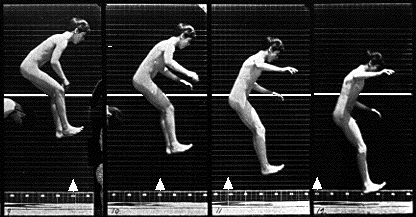
Fashioning the Body: Versions of the Citizen, the Self, and the Subject
The Evergreen State College | Fall 2007-Winter 2008
User Login |
beauty parlorOur presentation (Harrison, Olivia and I) was an inquiry into the ways in which bodies are altered (often drastically) in films, and the possible reasons. We showed short clips from three movies; the clip I presented was from the second installment of the X-Men trilogy, films based on comic books in which a whole segment of the human race have mutated into creatures with special powers. In this film, a rogue military scientist hatches a plot to exterminate the mutants worldwide, for ostensibly eugenic reasons. The good mutants and bad mutants unite briefly to defeat this common foe. The anti-racist themes of the movie are explicit, highlighted by the presence of mutants with unusual skin colors (blue) and a mutant named Magneto who is a Holocaust survivor. The scene I chose showed the group of united mutants breaking into the secret military base in order to stop the evil plan. In the beginning of the scene, Storm, a black woman, is explaining the layout of the base. She seems to be in charge at first, but in the course of their planning she makes no decisions and takes no action which moves the story forward. The next person to speak is Nightcrawler, a blue man with a heavy accent. He remains seated throughout the scene and also does nothing to move the action. Next is an argument between Wolverine and Magneto, both white men. Magneto uses a "brains-over-brawn" argument to win, thereby using the last significant character in the scene, Mystique, to break in. Mystique has no dialogue in the scene, except while disguised as Wolverine. While she is apparently an expert fighter and computer whiz, she also makes no decisions of her own and is used as a tool. My analysis of this scene, and the X-Men films in general, is that while they attempt to address issues of race, they are at the same time reinforcing gender difference. Even their treatment of race is problematic at times-- Mystique has to disguise herself as a white man to gain access to a military installation! Mystique is a perfect example of de Lauretis' description of the sexualization of women in film- in the X-Men comic books and cartoons, she was clothed, but in the films she is always naked. Furthermore, she is an example of the angel/monster, virgin/vamp portrayal of women in fiction whereby women are always extremely good or bad and never a complex mixture of the two.
Submitted by Annette on Mon, 11/12/2007 - 12:21pm. Annette's blog | login or register to post comments | printer friendly version
|
Who's onlineThere are currently 0 users and 1 guest online.
Events
|
|||||||||||||||||||||||||||||||||||||||||||||||||
